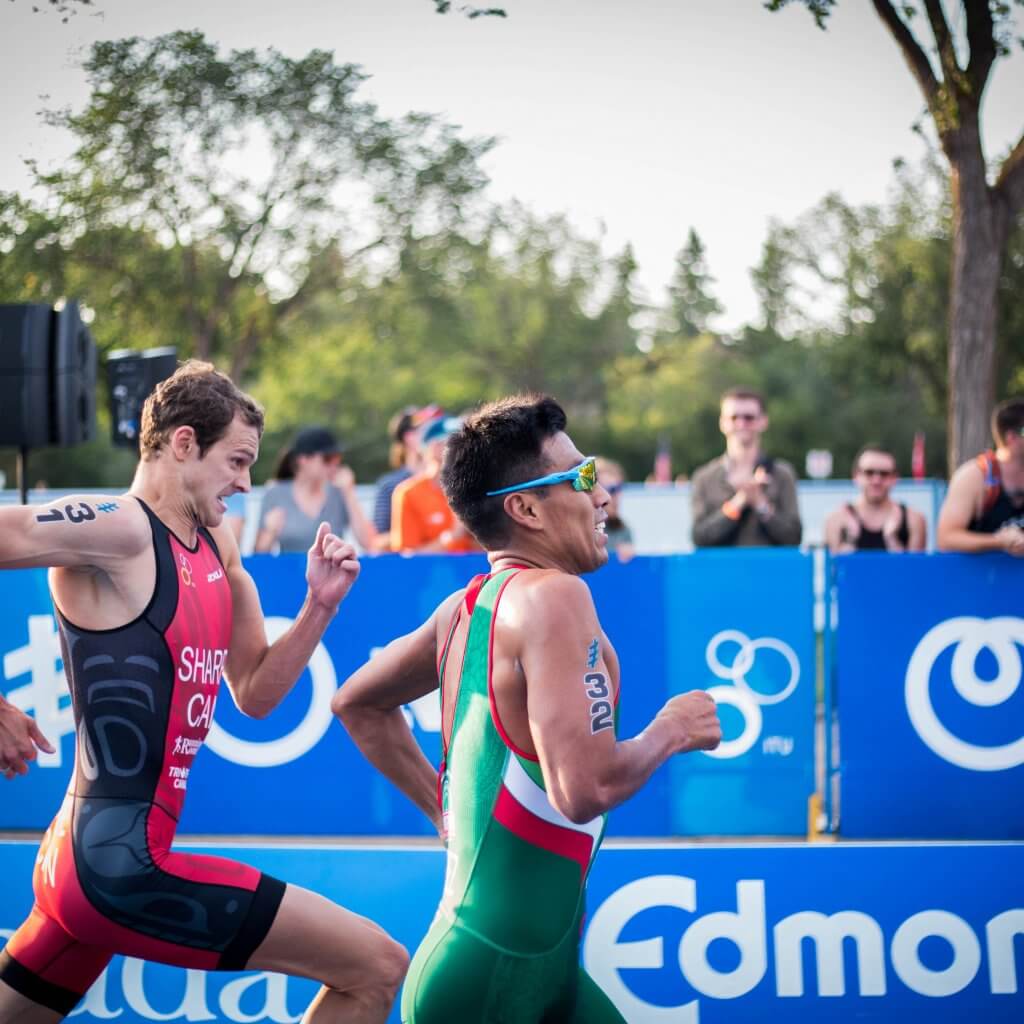What The Fartlek? All Commonly Used Running Terms Defined

The deeper we fall down the rabbit hole into the wonderful world of running, we quickly realize we have a lot to learn. There is a whole lot more that goes into running than just putting on sneakers and going. The more experienced we become at the sport we learn about running nutrition, how to navigate through races (which is a whole world in itself), and just how much we love to run. We become consumed in all things running. This includes books, magazines, and even websites like this. Let us not for running groups and making new runner friends. And then we read or hear running terms like cadence and gait, bonk and taper. Don’t forget acronyms like DNF, DOMS, PR, and BQ. All this running lingo has us like what the fartlek?
It is almost like there should be running dictionary given with every pair of shoes sold. While this isn’t possible, it also isn’t necessary. The more familiar we become with the sport the more experienced we become with the terms and its meanings.
But we still need the terms defined in order to know what runners are talking about when in conversation. Consider this a runner’s go-to guide to learning all the running terms.

The Basics
There are commonly used words and acronyms that are most frequently used. Runner’s don’t need to memorize these like a vocabulary test in grade school. They are written, said, and read enough to remember the more involved the runner becomes in the community.
Distances
Distances are the foundation of running knowledge. Runners usually don’t say they are going for a 3.1-mile run. Instead, they are running a 5k. The breakdown of distances is the same for regular runs and races.
K: kilometers or 1,000 meters
5K: 3.1 miles
10K: 6.2 miles
Half Marathon: 13.1 miles
Marathon: 26.2 miles
Ultra Marathon: Any distance race longer than 26.2 miles
Triathlon: A race that includes a portion swimming, cycling, and running.
Ironman: A race that consists of a 2.4-mile swim, 112 miles on the bike, and a 26.2-mile run.
Those who incorporate speed work at a track need to know the following as well:
400 meters: 1 lap around a track; a quarter mile
800 meters: 2 laps around a track; half a mile.
Commonly Used Running Terms For Racing

Bib: This refers to the number given to identify the runner in a race. The bib is pinned onto the runner’s shirt or outermost layer of clothing with safety pins.
Chip Time: This refers to the technology that is all to accurately determine when the runner crossing the finish line at the race so that officials know the overall time that runner completed the distance. This is recorded automatically. The chip is often placed on the runner’s bib or attached to their shoelace.
Hitting the wall: This is a running term often heard among marathoners. It refers to the feeling when glycogen stores (glucose) become all used up and the body becomes fatigued during a long run. It feels like the runner ran into a wall. This often happens around mile 20 in a marathon or training run.
Master: This refers to runners who are 40-years-old or older competing in a race.
PR: Personal record. This means beating the runner’s best time for that distance.
PB: Personal best. The same as above.
DNF: Did not finish. This runner term means the runner did not complete the distance and had to quit for whatever reason.
Running Terms About The Run

Cadence: This running term refers to the stride rate of the runner. Cadence is the number of times the feet hit the ground per minute. Many believe the ideal cadence is around 180.
Gait: Refers to foot strike, or which part of the foot hits the ground first when running. There is heel strike, midfoot strike and forefoot strike.
Junk miles: This refers to a run at an extremely easy pace that is part of a training program in order to recovery from more challenging runs.
Lactate threshold: This is exercise at an intensity where there is an increase in lactate or lactic acid in the blood. Also called aerobic threshold, it’s also when glycogen becomes the dominant source of fuel for the body.
Negative splits: This is when each mile ran is faster than the previous mile; when the second half of the race is run faster than the first.
Splits: This running term is the times at specific mile markers.
Overpronation: When the roll rolls slightly inward when running.
Underpronation: When the foot strike more to the outer side of the foot, usually seen with those with high arches.
Runner’s high: This is the euphoric feeling that is associated with the release of endorphins that occurs during a run unexpectedly. This is described as the “feel good” feeling during a run.
Vo2 max: This is the maximum amount of oxygen the runner consumed and transports in the body when working out.
Taper: This is the term used when the runner reduces mileage before a big race. This is down in the week and days leading up to a long distance race in order to give the muscles a rest.
The Ones We Always Need To Look Up: Fartlek vs. Intervals vs. Tempo Runs
After being fitted for sneakers, venturing out and completing a 5k, it’s safe to say that you are really feeling like a runner now. But these running terms are the ones we always need to look up to remember the difference.
Fartlek: Swedish term that means “speed play.” This is a speed run where the athlete runs slow then increases to a comfortable pace and then runs short and fast sprints.
Tempo: A tempo run is one at a pace that is 25 to 30 seconds per mile slower than 5k race pace. It actually has science behind it, where it’s the point in which the body can clear as much lactate as it makes. Tempo runs help to make runners faster, specifically in long distance runs.
Intervals: Things can get confusing when comparing fartlek, tempo and interval run. Intervals include a period of full effort followed by periods of recovery or rest. This means slowing down to a jog or even run. Then repeat. Interval pace should be faster than both tempo and fartlek pace. Think of it as sprints with slowing down. Make sure to warm up and cool down since this is a more intense workout.
Other Acronyms
BQ: Boston qualifier; a marathon that gets finishers into the Boston Marathon based to their time.
DOMS: This stands for delayed onset muscle soreness, which happens after a long or intense workout.
LSD: The acronym for long, slow distance.
ITB: iliotibial band (which runs from the hip to the knee)
RRCA: Stands for Road Runners Club of America.
USATF: USA Track and Field. Many time chipped races are USATF certified.
WR: World record.
Sources
- , What Exactly Is a Tempo Run?, Running Website
- , Tempo run, fartlek, intervals – all the same?, Smartwatch Blog
Latest Articles
 Is Running on a Treadmill Easier Than Running Outside?Runners have their own preferences, whether it is treadmill running, running outside on the road, or exploring trails. So...
Is Running on a Treadmill Easier Than Running Outside?Runners have their own preferences, whether it is treadmill running, running outside on the road, or exploring trails. So... Is It OK to Use Trail Running Shoes on the Road?While trail running shoes can be used on roads, especially in situations where a runner encounters mixed terrains or pref...
Is It OK to Use Trail Running Shoes on the Road?While trail running shoes can be used on roads, especially in situations where a runner encounters mixed terrains or pref... How to Fix Sore Quads After Running?Rest, ice, gentle stretching, and over-the-counter pain relievers can help soothe sore quads after running. Also, ensure ...
How to Fix Sore Quads After Running?Rest, ice, gentle stretching, and over-the-counter pain relievers can help soothe sore quads after running. Also, ensure ... 10 Fruits With The Most Electrolytes to Replace Sports DrinksThese fruits are high in electrolytes such as potassium, magnesium, and calcium, essential for hydration, muscle function...
10 Fruits With The Most Electrolytes to Replace Sports DrinksThese fruits are high in electrolytes such as potassium, magnesium, and calcium, essential for hydration, muscle function...

